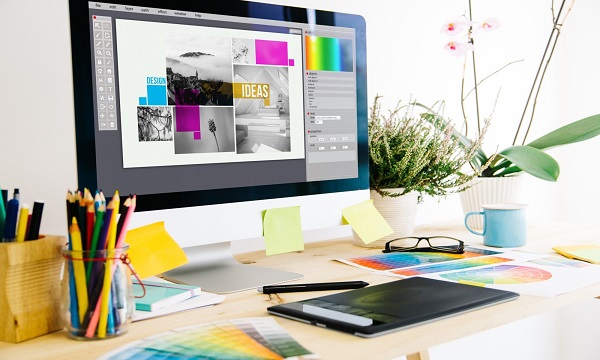Graphic Designing

Graphic design is the art and practice of creating visual content to communicate messages. It involves a combination of images, typography, and layout techniques to produce visually compelling and effective designs. Graphic designers work on a variety of projects, including advertisements, websites, logos, brochures, and product packaging, to convey information and engage audiences.
The Importance of Graphic Design
First Impressions Matter: Graphic design helps create a strong first impression. Whether it’s a logo, a business card, or a website, good design grabs attention and conveys professionalism.
Brand Identity: Graphic design is crucial for establishing and maintaining a brand’s identity. Consistent use of logos, colors, and typography helps build brand recognition and trust.
Effective Communication: Visuals are often more effective than words alone in conveying messages. Graphic design simplifies complex information and makes it more accessible and engaging.
Increased Engagement: Well-designed visuals can capture and hold the audience’s attention, leading to increased engagement and interaction with the content.
Emotional Connection: Good design evokes emotions and can influence how people feel about a brand or product. It helps create a memorable and positive user experience.
Key Elements of Graphic Design
Color: Colors evoke emotions and set the tone of the design. They can attract attention, convey meanings, and enhance the overall aesthetic appeal.
Typography: The choice of fonts and text styles plays a significant role in readability and the design’s overall look and feel. Typography should be chosen to reflect the brand’s personality and message.
Imagery: Images, illustrations, and icons are powerful tools for visual communication. High-quality imagery can make designs more appealing and effective.
Layout: The arrangement of elements on a page is crucial for guiding the viewer’s eye and creating a balanced, harmonious design. Good layout ensures that information is easy to find and understand.
Space: Also known as white space, this is the empty space around design elements. Proper use of space improves readability and helps to focus attention on key elements.
Contrast: Contrast between different elements, such as colors, shapes, and text, helps to highlight important information and create visual interest.
Consistency: Maintaining a consistent style across all design elements ensures a cohesive and professional look. Consistency is key to building a recognizable brand identity.
The Graphic Design Process
Understanding the Brief: The first step is to understand the client’s requirements, goals, and target audience. This involves detailed discussions and research.
Concept Development: Based on the brief, designers brainstorm and develop initial concepts. Sketches and mood boards are often used to explore different ideas.
Design Creation: Once a concept is chosen, designers create detailed designs using software like Adobe Photoshop, Illustrator, or InDesign. This stage involves refining the layout, choosing colors, and adding images and typography.
Feedback and Revisions: The design is presented to the client for feedback. Based on the client’s input, revisions are made to improve and finalize the design.
Finalization and Delivery: After final approval, the design is prepared for print or digital use. This may involve creating various file formats and ensuring the design meets all technical requirements.
Tools and Software
Adobe Photoshop: A powerful tool for photo editing, manipulation, and digital painting.
Adobe Illustrator: The industry standard for vector graphics creation, ideal for logos, icons, and illustrations.
Adobe InDesign: Used for layout design, perfect for creating brochures, magazines, and other print materials.
CorelDRAW: A vector graphic design software popular for logo creation and typography.
Sketch: A digital design tool specifically for UI/UX design, widely used for web and mobile app design.
Canva: An online tool that offers a user-friendly interface and pre-made templates for quick and easy design creation.
Emerging Trends in Graphic Design
Minimalism: Focuses on simplicity and the use of negative space, emphasizing the most important elements.
Bold Typography: Using large, eye-catching fonts to create strong visual statements.
3D Design: Incorporating three-dimensional elements to add depth and realism to designs.
Sustainable Design: Emphasizing eco-friendly and sustainable design practices, using recycled materials, and promoting environmental awareness.
Motion Graphics: Adding animation and movement to designs to create dynamic and engaging visual experiences.

